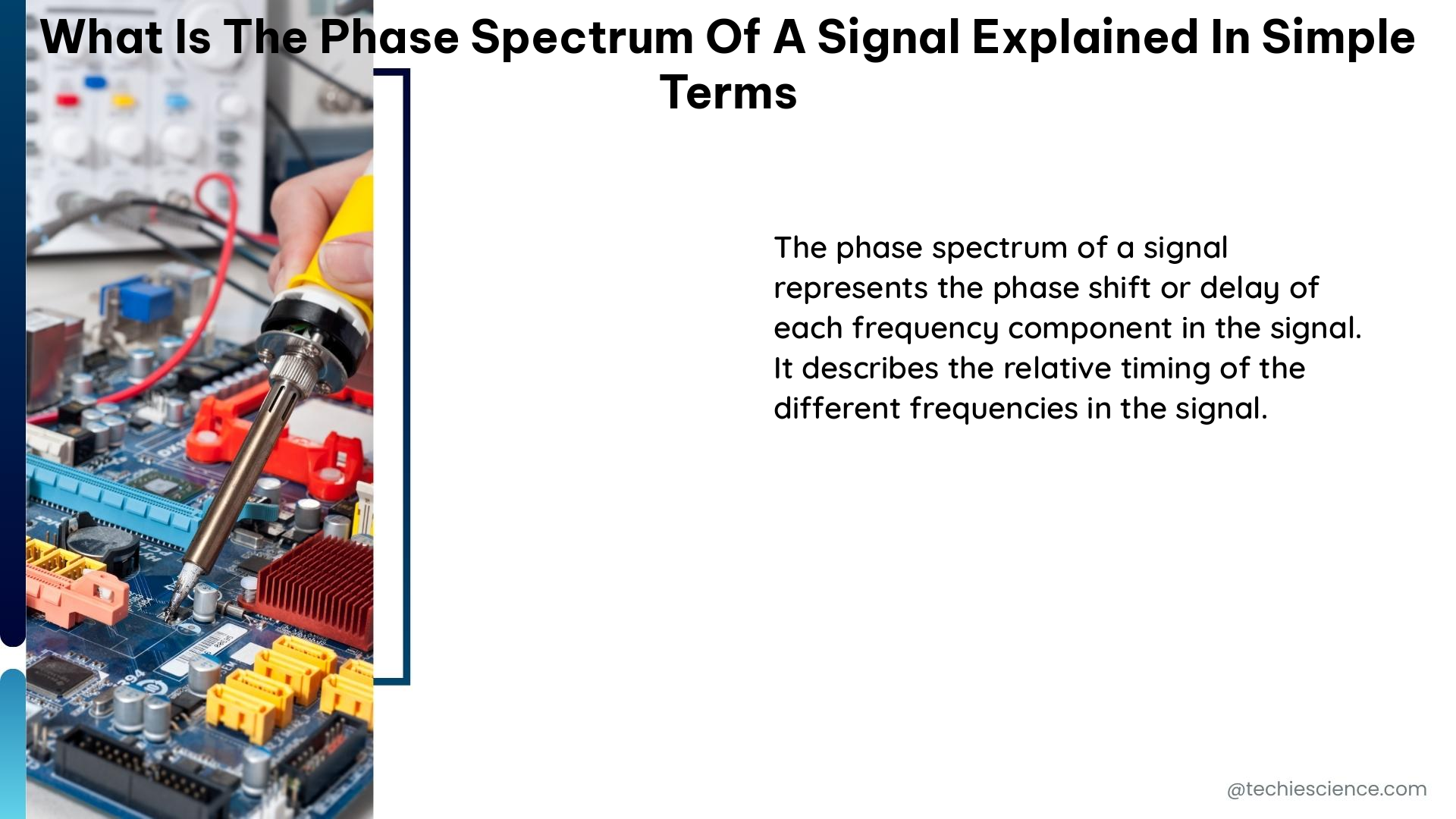The phase spectrum of a signal is a crucial concept in signal processing that provides valuable information about the frequency components of a signal and their relative phase relationships. In simple terms, the phase spectrum represents the phase shift or delay of each frequency component in a signal compared to a reference signal, typically a cosine wave.
Understanding the Phase Spectrum
The phase spectrum is typically plotted as a function of frequency, with the phase shift shown on the vertical axis and the frequency on the horizontal axis. This representation allows us to visualize how the phase of different frequency components in a signal varies.
The phase spectrum can provide important insights into the characteristics of a signal, such as:
-
Time Delay: If a signal experiences a time delay, the phase spectrum will exhibit a linear relationship between phase and frequency. The slope of this linear relationship is proportional to the time delay.
-
Phase Relationships: The phase spectrum can reveal the presence of leading or lagging phase relationships between different frequency components in a signal. This information is crucial in applications such as audio processing, where phase relationships can affect the perceived sound quality.
-
System Characteristics: In the context of signal processing systems, the phase spectrum can provide information about the system’s frequency-dependent behavior, such as the presence of resonances or phase distortions.
Measuring the Phase Spectrum

The phase spectrum can be measured and quantified using various methods, including the Fourier transform and the discrete Fourier transform (DFT). These techniques convert a time-domain signal into its frequency-domain representation, which includes both the amplitude and phase spectra.
The DFT is particularly useful in digital signal processing applications, as it can be efficiently computed using fast Fourier transform (FFT) algorithms. The DFT decomposes a discrete-time signal into a sum of complex exponential functions, each with a specific frequency and phase.
Practical Applications of the Phase Spectrum
The phase spectrum has numerous practical applications in various fields, including:
-
Audio and Speech Processing: In audio and speech processing, the phase spectrum is crucial for preserving the perceived quality and characteristics of the signal. Phase relationships can affect the timbre, localization, and intelligibility of audio signals.
-
Radar and Sonar Systems: In radar and sonar systems, the phase spectrum is used to extract information about the target’s distance, velocity, and direction. The phase shift of the reflected signal can be used to determine the target’s characteristics.
-
Biomedical Signal Analysis: In biomedical signal analysis, the phase spectrum can provide insights into the underlying physiological processes, such as the propagation of electrical signals in the heart or the brain.
-
Structural Health Monitoring: In structural health monitoring, the phase spectrum of vibration signals can be used to detect and diagnose structural changes or damage, which can be crucial for maintaining the integrity of infrastructure.
-
Communication Systems: In communication systems, the phase spectrum is essential for modulation and demodulation techniques, such as phase-shift keying (PSK), which rely on the phase information of the signal.
Conclusion
The phase spectrum of a signal is a powerful tool in signal processing that provides valuable information about the frequency-dependent characteristics of a signal. By understanding the phase spectrum, engineers and researchers can gain deeper insights into the behavior of various systems and signals, leading to improved design, analysis, and applications in a wide range of fields.
References:
1. EE 216 – Experiment 4 – Amplitude and Phase Spectra Bandwidth, https://ece.mst.edu/media/academic/ece/documents/coursenotes/ee3411discretelinearsystemslab/EE_3411_Experiment04.pdf
2. What information is contained in the phase spectrum of a signal?, https://www.researchgate.net/post/What_information_is_contained_in_the_phase_spectrum_of_a_signal2
3. Phase Spectrum of Signals – fft – Signal Processing Stack Exchange, https://dsp.stackexchange.com/questions/87828/phase-spectrum-of-signals
4. Phase Spectrum, https://www.sciencedirect.com/topics/engineering/phase-spectrum
5. Magnitude and phase spectrum with example, https://www.youtube.com/watch?v=MFOjUgafq0k

The lambdageeks.com Core SME Team is a group of experienced subject matter experts from diverse scientific and technical fields including Physics, Chemistry, Technology,Electronics & Electrical Engineering, Automotive, Mechanical Engineering. Our team collaborates to create high-quality, well-researched articles on a wide range of science and technology topics for the lambdageeks.com website.
All Our Senior SME are having more than 7 Years of experience in the respective fields . They are either Working Industry Professionals or assocaited With different Universities. Refer Our Authors Page to get to know About our Core SMEs.